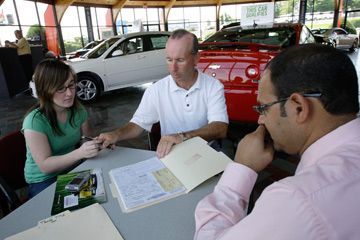Someone once said that worry is interest paid on a loan that never comes due. Auto insurance can feel that way, too. Every month, we owe our insurers money whether or not we have need of their services. Worse, should something unfortunate occur, our rates will likely jump up. It's a bitter pill to swallow, but it might go down a trifle easier if we had a clearer picture of just how those premiums are calculated.
Fundamentally, insurance is a set of wagers laid by insurance companies using their clients' pooled money. Like a Las Vegas casino, insurance companies never stand much of a chance of losing across the board, since they have piles of actuarial tables that lay out the odds and because they hedge their bets by raising or lowering our premiums according to their exposure, the risk that they'll have to pay -- and how much. We can also pony-up some extra cash to increase our coverage if we're feeling fairly flush or risk-averse.
Advertisement
Some limited oversight exists to monitor these rates. Most states require regulators to sign off on personal automobile rates before they go into effect, and medical benefits and payments are subject to certain caps. No such requirements exist regarding the cost to repair a vehicle, however. Insurance companies maintain a profit margin of around 5 percent, with 68 percent of premiums applied toward paying claims, 25 percent spent on overhead and 2 percent set aside for taxes [source: Insurance Information Institute].
The average annual cost of auto insurance coverage in the United States varies depending on how you measure it. The actual average nationwide wide expenditure in 2007 was $795, ranging from $511.79 in North Dakota to $1,139.82 in the District of Columbia. On the other hand, if consumers had purchased all three types of coverage (liability, comprehensive and collision, as discussed on the next page), then the average would have been around $912. Iowans would have paid the least, at $620.08, while District of Columbia residents would have shelled out more than double that amount, at $1,288.52 [source: National Association of Insurance Commissioners].
So that's what you're putting on the line, but what do you get for your money? That varies by state, insurance company and a bunch of other factors we'll break down in the next section.
Advertisement



